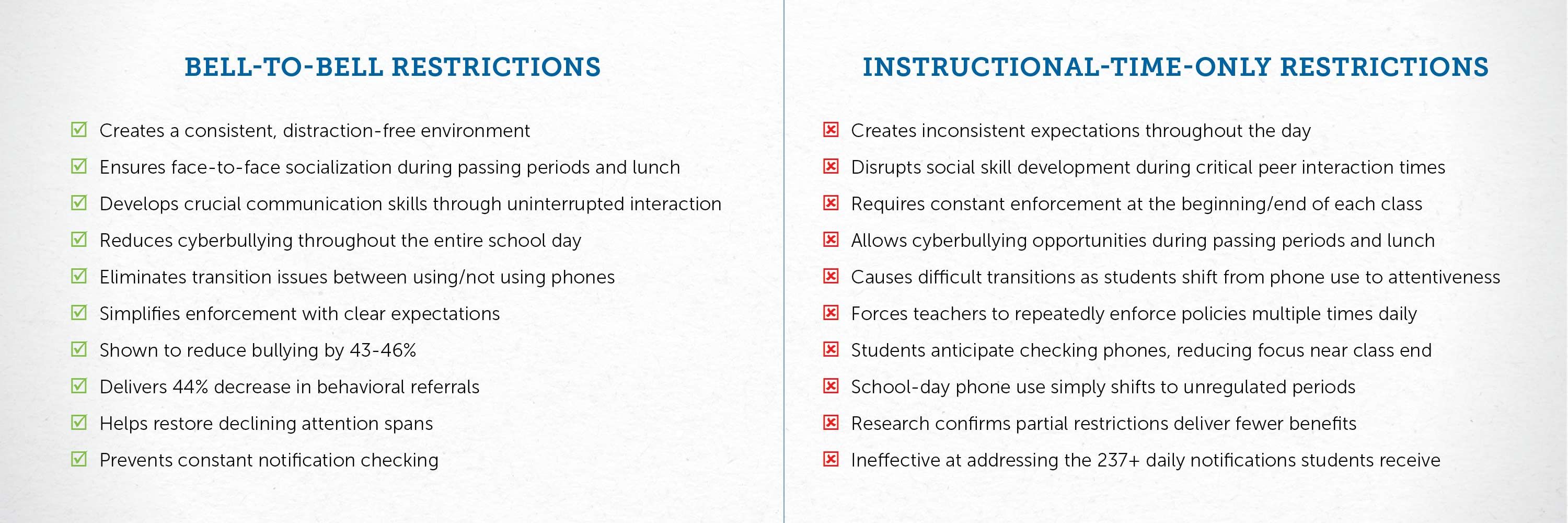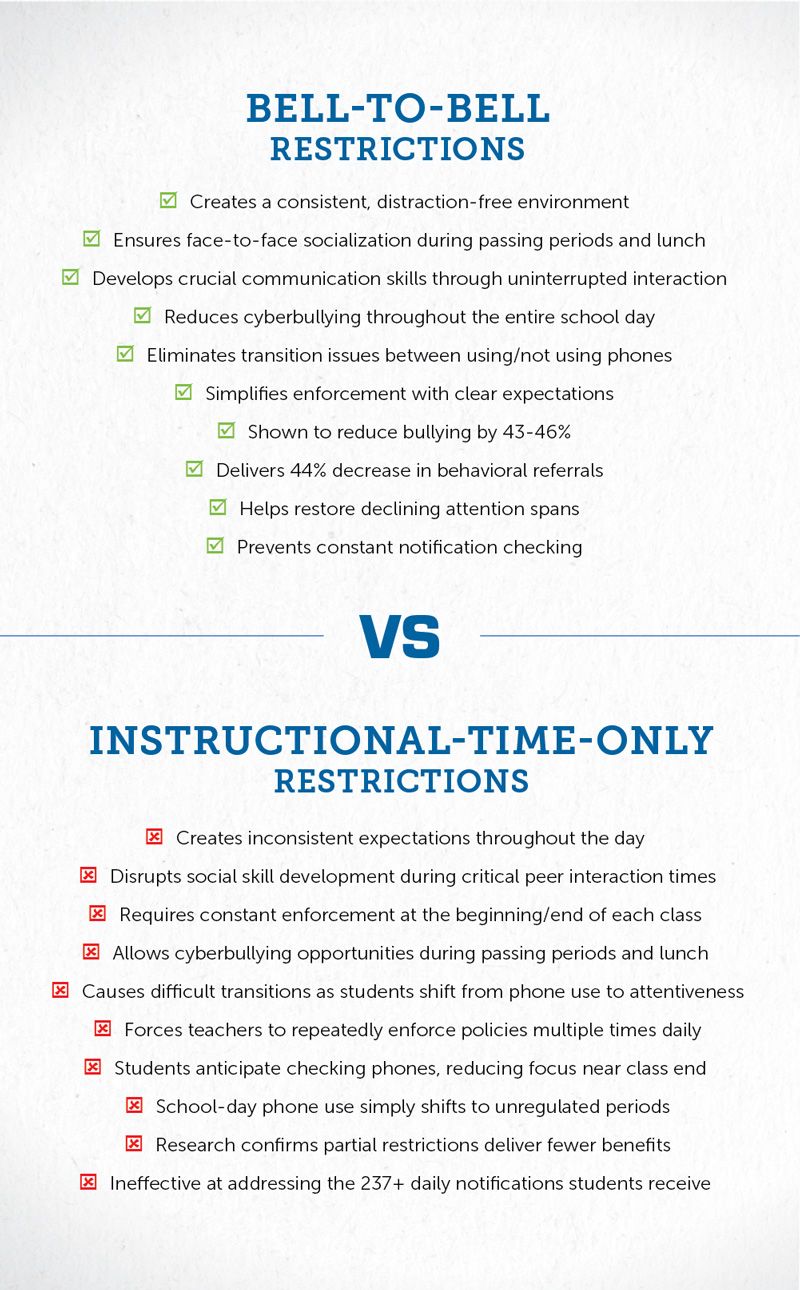"This isn’t about being anti-phone or anti-technology — it’s about being pro-childhood. We’re giving students seven hours a day free from distractions so they can focus on learning, access their creativity, and make real human connections."
~ NYSUT President Melinda Person
In nearly a year of analyzing this crisis, it became clear that half-measures wouldn't work. An instructional-time-only restriction simply shifts the problem to hallways, lunchrooms, and buses, allowing cyberbullying and social media pressures to continue. The only policy that aligns with our responsibility to protect our children is a comprehensive, bell-to-bell restriction.

Why a Bell-to-Bell Policy is the Only Real Solution
A piecemeal approach fails to address the full scope of the problem. A consistent, school-wide policy is the only way to create an environment where students can truly thrive.
Big Problems Require Bold Solutions, Not Half-Measures
If we truly believe the research showing the detrimental effects of these devices, bell-to-bell restrictions are the only policy that aligns with our responsibility to protect and educate our children. The status quo is clearly not working—we need comprehensive protection, not half-measures.

The Status Quo Is Not a Solution
Instructional-time-only restrictions represent a puzzling contradiction: they acknowledge these devices are harmful enough to ban during class but somehow acceptable during critical social development periods. This inconsistent approach fails to protect students.
Research-Backed Outcomes: Bell-to-Bell Restrictions Implemented Already Deliver Measurable Results.
- 6.27% increase in academic success rates
- 74% of teachers report improved student engagement after implementation
- Significant reduction in behavioral incidents
- More effectively addresses the correlation between social media use and negative mental health outcomes
Proven Results from New York Schools
Schools across New York State that have already gone phone-free are seeing a dramatic transformation. The evidence is compelling.
Improved School Climate
Districts report a significant reduction in bullying (up to 46%) and a 44% decrease in monthly behavioral referrals.
Increased Student Engagement
Teachers have seen up to a 91% increase in student engagement, with 74% reporting improved student attention.
Better Academic Outcomes
These policies have led to a 6.27% increase in academic success rates for students.
Voices from Our Schools
"It has been absolutely wonderful to see kids talking and having conversations again, not engrossed with their phones.” 18
- Kimberly Popken, President, Poughkeepsie Public School Teachers Association
"On day one, our educators noticed students engaged with each other, talking through problems...working out issues rather than trying to solve issues on a cellphone." 19
- Dave Blanchard, Superintendent, Schoharie Central Schools
"Our halls are lively again, conversation has come back, and it's like the old days where I see their smiles, I see their eyes, and I have witnessed firsthand their engagement improve almost immediately." 20
- David Rounds, President, Bethlehem Central Teachers Association
About New York's New Distraction-Free Schools Policy
In May 2025, New York became the largest state to enact a comprehensive bell-to-bell cellphone policy for K-12 schools, backed by a $13.5 million state investment to support implementation. NYSUT and its members championed this landmark law to create healthier and safer learning environments for all students.

